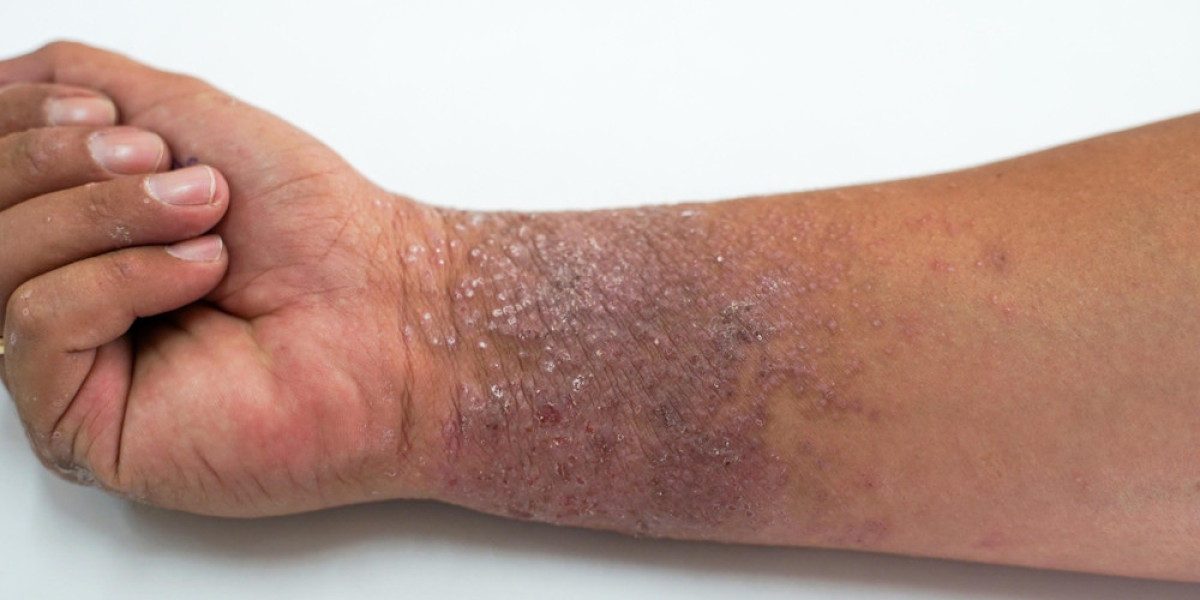Nowadays, atopic dermatitis affects over 16.5 million people and 9.6 million children. It is a common type of eczema that is characterized by skin that is itchy, pigmented, irritated, and inflamed. Although it sometimes appears in childhood, this chronic illness may become better with age. It is crucial to remember that this condition is not communicable, even if it can occasionally cause pain and discomfort. Enrolling in atopic dermatitis clinical trials helps people manage it better.
The causes, remedies, and symptoms of atopic dermatitis will all be covered in this blog.
What symptoms define atopic dermatitis?
Atopic dermatitis causes the affected area to become dry, scaly, and uncomfortable to the touch. It looks reddish on skin tones that are lighter and bluish-gray on darker skin tones. Additional signs of the illness include:
Skin that is toughened and thickened
Rashes that could leak fluid
Skin cracks and crusting
Skin color changes and darkening
Excessive itching (pruritus)
Bleeding from scratches
Swelling
Marks and blisters
Tiny, itchy bumps on the afflicted areas
Atopic dermatitis causes: who is affected and why?
Even while it is more common in childhood and adolescence, it can impact anyone at any age. Atopic dermatitis is also more common in women and non-Hispanic individuals. Since this is a complex condition, there isn't a single dominant cause. Scientists and medical professionals have determined, however, that a few hereditary and environmental variables may cause the illness to develop or worsen. These include:
Autoimmune reaction
Atopic dermatitis is a result of a compromised skin barrier, exposing the skin to irritants and allergens in the atmosphere. The body initiates an immunological reaction when coming into contact with a foreign body. This makes the eczema worse and increases inflammation. Disruptions to the epidermal barrier may enable viral and bacterial infections, particularly those caused by Staphylococcus aureus.
Surroundings
There are many things in the environment that can irritate your skin. For example, this problem gets critical with increased exposure to smoke, air pollution, abrasive soaps, wool clothing, and other skincare products. Furthermore, dry and itchy skin can be caused by low humidity, and itchy skin can be made worse by perspiration, which is brought on by high temperatures and high humidity.
Irritants
Hay fever and asthma can exacerbate the severity of atopic dermatitis. In addition, various allergens such as pollen, dust, animal fur, and medications might cause skin that is more susceptible to eczema. Furthermore, certain foods can cause a surge in atopic dermatitis. Examples of these foods are eggs, peanuts, cow milk, soy, seafood, dry fruits, and shellfish.
Emotional turmoil
Your mental health may affect the health of your skin, which could result in the multiplication of eczema symptoms. Increased stress, worry, or depressive symptoms may cause these symptoms to appear more frequently.
Molecular Biology
People who currently have or previously had a family member with eczema are more likely to get eczema themselves. Atopic dermatitis is more likely to occur when genetic abnormalities cause an imbalance in the proteins that keep the skin's layers healthy.
Diagnosis
The initial stage in aiding an atopic dermatitis diagnosis is symptom identification. Medical practitioners can diagnose this condition more easily because of its distinct physical appearance. To determine the nature and intensity of symptoms, the doctor may perform a physical examination and then recommend a course of treatment. From time to time, they might suggest a skin patch test, tissue analysis, or blood test in order to gain an even deeper insight.
Getting rid of Atopic Dermatitis
Clinical treatment
Fortunately, there are a lot of efficient treatments available to manage atopic dermatitis. As an illustration:
- Ointments: Corticosteroids and other creams can be put on inflamed skin to decrease flushing and discomfort.
- Oral medication: Depending on the disease, physicians may recommend using prednisone or other oral medications to control inflammation. Antihistamines will be recommended if the eczema is allergic.
- Injections: FDA-approved injectable medications are the next line of treatment if oral and physical medications are ineffective. Dupilumab and Pheniramine are some instances.
- Light therapy: People who are still having severe flare-ups after trying traditional therapies often find that light therapy helps. A medical professional delivers controlled UV light dosages to the skin during this process.
At-home management
By taking the following precautions, mild and emergent atopic dermatitis can be managed:
Avoid scratching
The skin issue may get worse if you scratch too much. Therefore, make every effort to refrain from scratching. Instead, you might gently press or rub it. When a child has eczema, make sure they wear soft cotton gloves while they sleep and keep their nails clipped.
Apply moist dressing
Itching and irritation can be reduced by putting a damp dressing over an ointment.
Moisturize often
Adding moisture greatly alleviates dryness. To keep the skin nourished and moisturized, use a blend of light creams, unscented lotions, and organic oils.
Put on anti-itch creams
This will lessen the intense itching.
Frequently take antihistamines
Include anti-allergies in your regimen if you experience skin issues frequently. They will enhance your general health and manage allergic reactions.
Put on airy clothes
The skin can become readily irritated by uncomfortable clothing. Wearing airy and light clothing will help lower your risk of developing skin issues.
Use items without fragrance
People with atopic dermatitis need to use moisturizers, body washes, and soaps that are gentle and unscented.
Modify the humidity in your space
Your environment’s excessive dry air can make the atopic dermatitis symptoms worse. By using a humidifier, you can add moisture to the air and possibly feel better.
Have oatmeal baths
Oatmeal is excellent for skin health. It is also a naturally occurring moisturizing agent, which makes it ideal for those who have rashes and skin allergies.
Control your stress
Eliminating stress is ideal because it can negatively impact skin and general health.
Read Also: Explore the benefits of clinical trials, including new treatments & research opportunities
Winding up
Atopic dermatitis is a common type of eczema that results in red, irritated, itchy, and inflamed skin. It's a long-lasting condition that frequently starts in childhood but can improve as you become older. The good news is that it is not communicable, despite the fact that it occasionally causes pain and discomfort. &l








